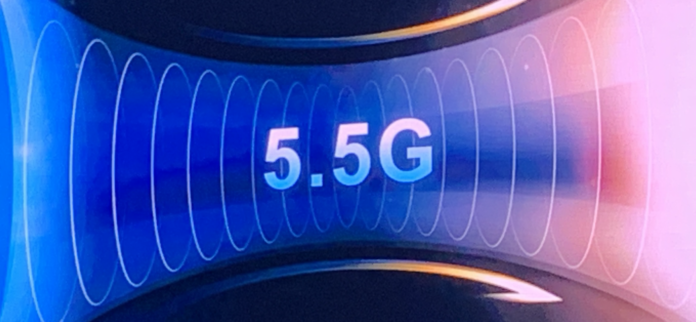Huawei noted that all spectrum bands can be used for the future provision of ‘5.5G’ services
BANGKOK, THAILAND- Operators currently lack enough spectrum resources in order to be in a position to launch future ‘5.5G’ networks, Yang Chaobin, Huawei’s president of ICT products and solutions and head of the wireless solutions division, told reporters.
“There are no specific spectrum bands for ‘5.5G’. All bands can be used for this technology. However, operators may face some challenges as the spectrum already allocated to the mobile industry is not sufficient for ‘5.5G’,” Chaobin said during a press conference at the Huawei’s 13th Global Mobile Broadband Forum (MBBF) being held this week in Bangkok, Thailand.
The executive noted that the 6 GHz band will be a key band for the so-called ‘5.5G technology’ and urged telecom regulators globally to reserve this spectrum band for mobile operators.
“5.5G”, or 5G Advanced, will be specified by 3GPP Releases 18, 19 and 20, after which 3GPP’s work will focus on 6G, which will hit the market around 2030, according to several voices in the industry.
Meanwhile, David Wang, Huawei’s executive director of the board and chairman of ICT infrastructure managing board, said during his keynote speech that after two years of concerted efforts across the industry, “5.5G” has seen huge progress, adding that the standardization of advanced 5G specifications has been initiated and is on right on track, making it more than just a vision.
Wang also noted that three types of “5.5G”-enabled IoT technologies, namely NB-IoT, RedCap, and passive IoT, are developing rapidly and will support numerous IoT connections.
“Looking ahead, our task is to tackle these five new areas – standards, spectrum, products, ecosystems, and applications,” Wang added.
He added that the industry must work together to ensure that Release 18 is frozen by the first quarter of 2024 as planned, which will help “5.5G” networks to become a reality.
“Regarding Release 19 and beyond, we should come together to explore what capabilities ‘5.5G’ will require in order to support new services and scenarios as we continue to refine ‘5.5G’ standards. This will both maximize the potential of this technology and extend its lifecycle,” he said.
Wang also noted that more spectrum for ultra-large bandwidth will be required. “We should fully utilize sub-100 GHz resources to build ultra-large bandwidth. mmWave is a key frequency band for 5.5G. Operators will need to acquire over 800 megahertz of spectrum from this band if they are to realize 10 Gbit/s experiences. 6 GHz is also a potential ultra-wide band for ‘5.5G’. When 6 GHz is promoted as an IMT band at WRC-23, it is likely that countries will need to auction off the 6 GHz spectrum. We can also re-farm the sub 6 GHz spectrum to achieve ultra-large bandwidth for ‘5.5G’,” Wang said.
The executive also stressed the fact that the industry needs to prepare for “5.5G” with mature networks, devices and chips. “Both our networks and devices need to be upgraded to deliver 10 Gbit/s experiences. More specifically, our products will rely on ELAA technologies that can support over 1,000 antenna arrays suitable for mid- and high-frequency bands, and massive MIMO will be required to support 128T capacity.”
The executive also highlighted that further innovation will be needed in regards to 5.5G chips and devices to make them more intelligent while it will also be necessary to develop an ecosystem to better address digital requirements in all scenarios.
“Operators and equipment vendors will need to improve plans for 5.5G networks in order to better connect both people and things, while device vendors must adapt costs and modular capabilities to application scenarios. In addition, industry and app developers will need to act immediately to start incubating new apps,” Wang added.

